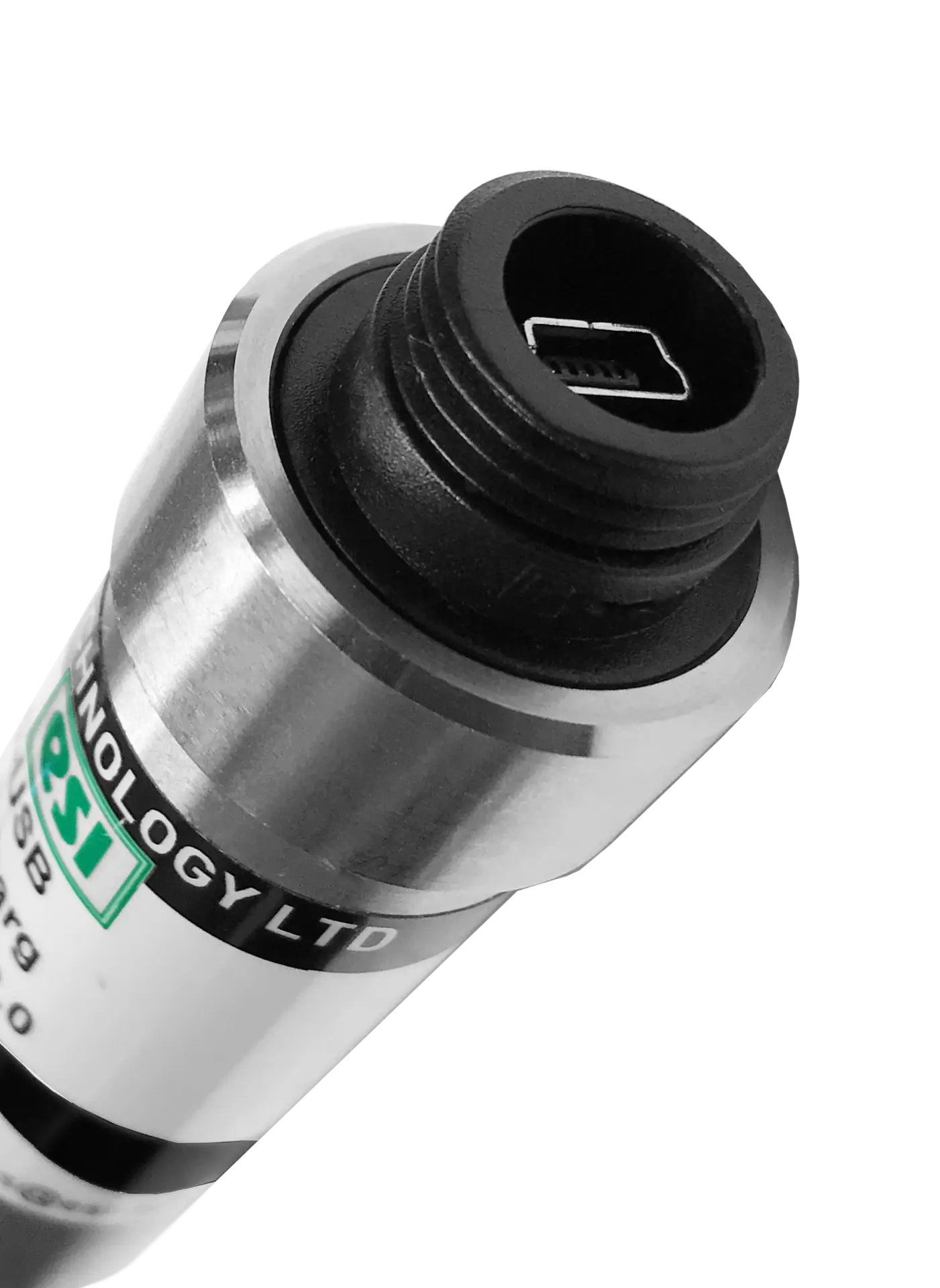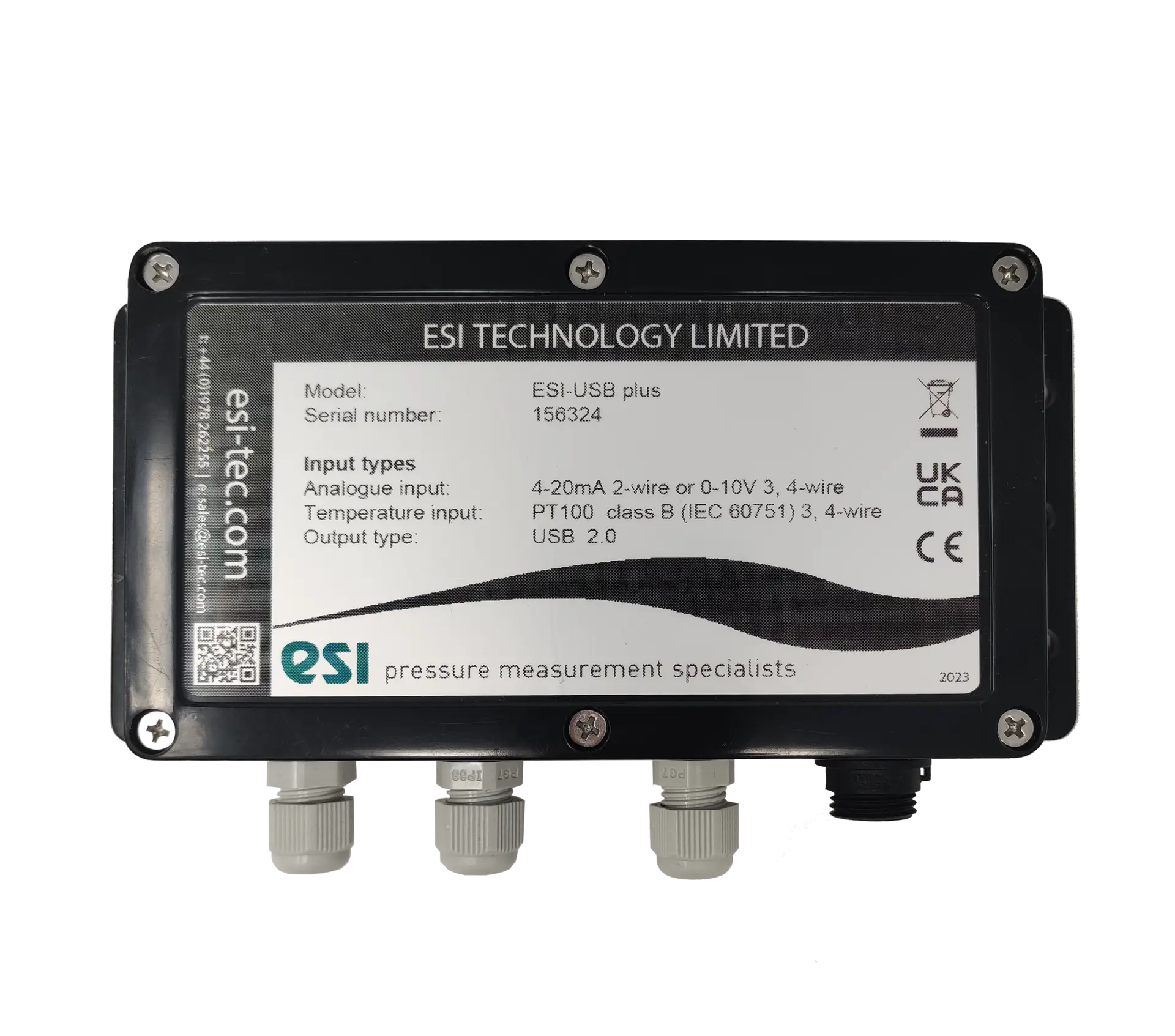Our Unit Converter
The ESI Unit converter allows you to quickly and easily access a conversion tool to work out your preferred unit of pressure measurement wherever you may be. Whether out on-site or in the office.

Download the ESI-USB© Software
The ESI-USB© software allows you to connect your ESI transducer to your laptop or PC and be up and running monitoring pressure data within ten minutes. The software auto-updates and is compatible with Windows 8, 10 & 11.


What is Silicon-on-Sapphire Sensor (SOS) Technology?
The combination of Silicon and sapphire provides a very durable sensor. Because the silicon is grown onto the surface of the sapphire it is incredibly stable and exhibits virtually no hysteresis. With its outstanding insulation properties, the sapphire protects the strain gauge from electromagnetic pulse radiation, and allows the sensor to operate over a very wide temperature range without loss of performance. It can endure high over pressures and provides superb corrosion resistance. The excellent elasticity of the sapphire ensures high repeatability which is a highly desirable characteristic for sensors.
The technical part of silicon-on-sapphire technology
Silicon-on-sapphire wafers are formed by depositing silicon onto the sapphire substrate at very high temperatures.
Natural sapphire tends to contain impurities, so very pure sapphire crystal is grown in a controlled lab environment. The formed sapphire ingots are cut at a 60º angle. This is known as the R-Plane. This plane reveals the oxygen atoms in the crystal and because the spacing of these atoms is almost identical to that in a silicon crystal, the silicon can be cleanly deposited onto the surface of the sapphire wafer.
Doped silicon strain gauges are etched from the layer of silicon and individual strain gauges are electrically isolated from each other by the outstanding insulating characteristics of the sapphire substrate. The ability to operate at high temperatures, chemical inertness, and virtual absence of hysteresis make the strain gauges ideal for use in pressure sensors. Utilizing Silicon-on-Sapphire sensing technology results in excellent long-term stability of <0.2% and also has a major advantage over non-SOS bonded silicon sensors. The silicon Wheatstone bridge formed during the manufacture is free from any residual stresses that may add to hysteresis and non-repeatability errors, which decrease long-term stability. There are no bonding agents between the sensing element and sapphire substrate that may age and cause instability.
Some history about silicon-on-sapphire
A very practical experiment in 1963 at North American Aviation (now Boeing) led to the discovery of SOS. A sapphire crystal was polished into a spherical shape and immersed in a gas containing silicon. A spherical surface will expose all of the planes that exist in a crystal system. It was found that silicon grew in certain sites on the sphere, and these were identified as corresponding to the R plane of sapphire.
In the mid 1960?s researchers worked on making S.O.S a manufacturable technology. The primary application was for radiation hard circuits, but it soon became apparent that the other benefits of S.O.S could lead to commercial usage.
A further breakthrough was the development of ultra thin S.O.S films by the California Institute of technology along with Hewlett Packard in 1978. A process called SPER (Solid Phase Epitaxial Re-growth) was developed until the stage where S.O.S could be commercialized for the first time in 1990. Silicon-on-Sapphire is now one of the most promising pressure sensing technologies and is gaining broader acceptance in higher volume applications.


